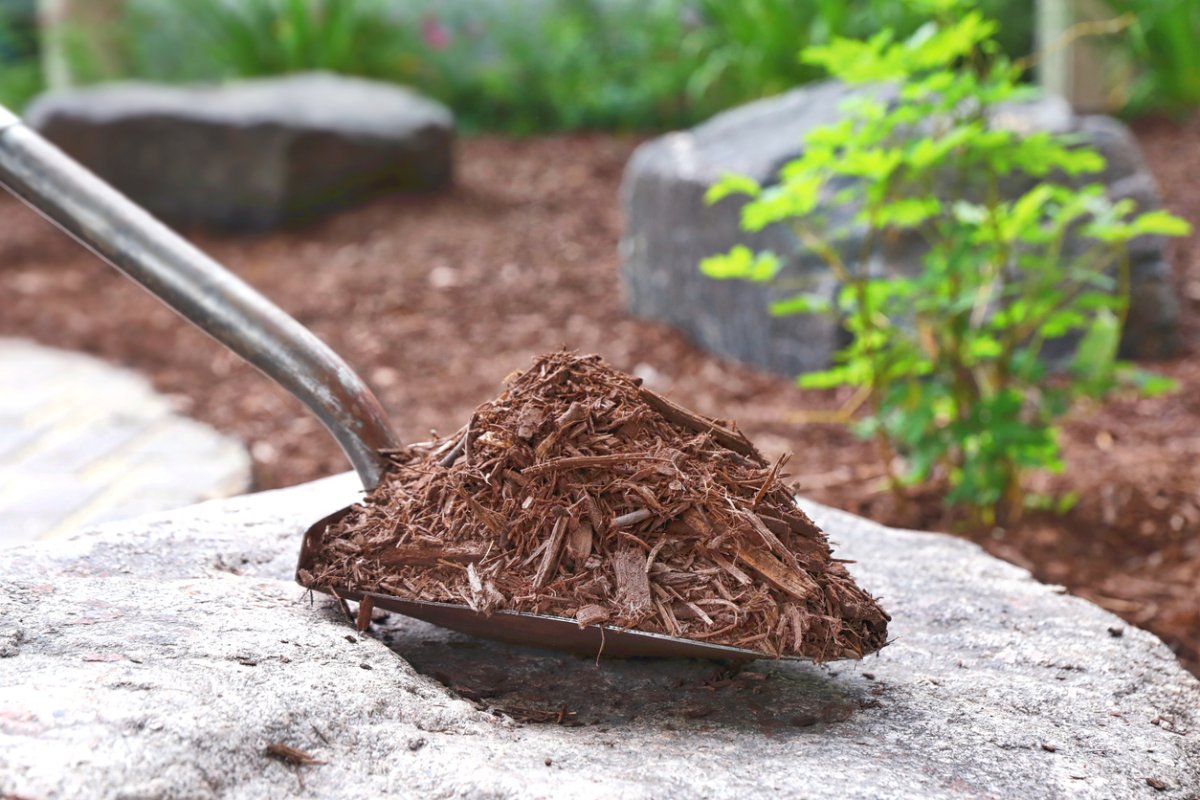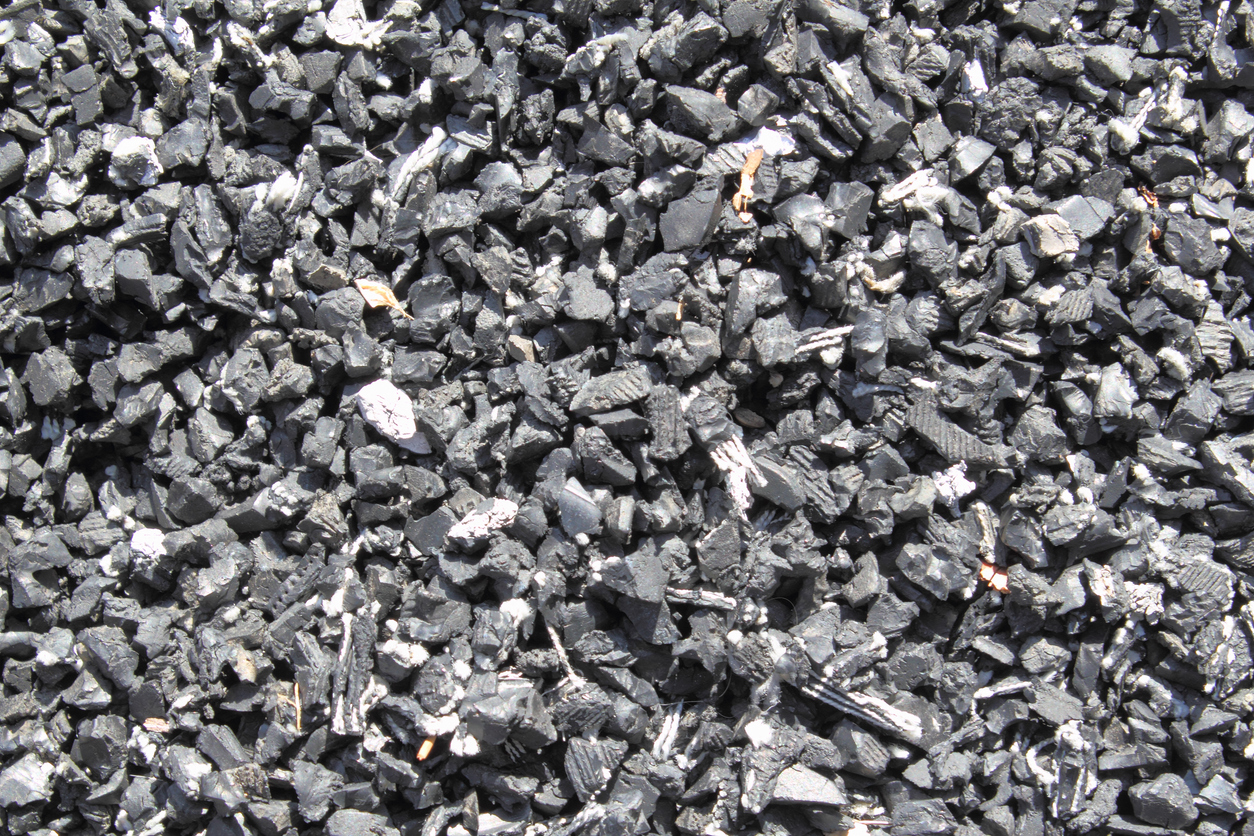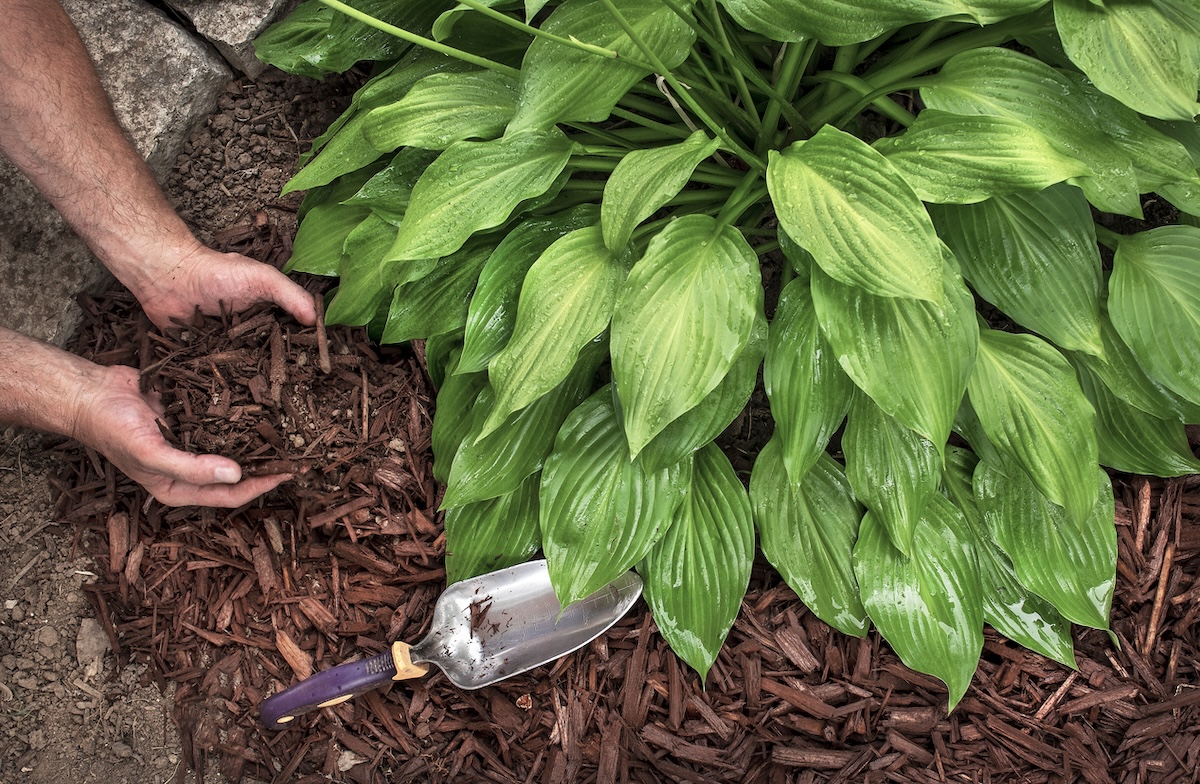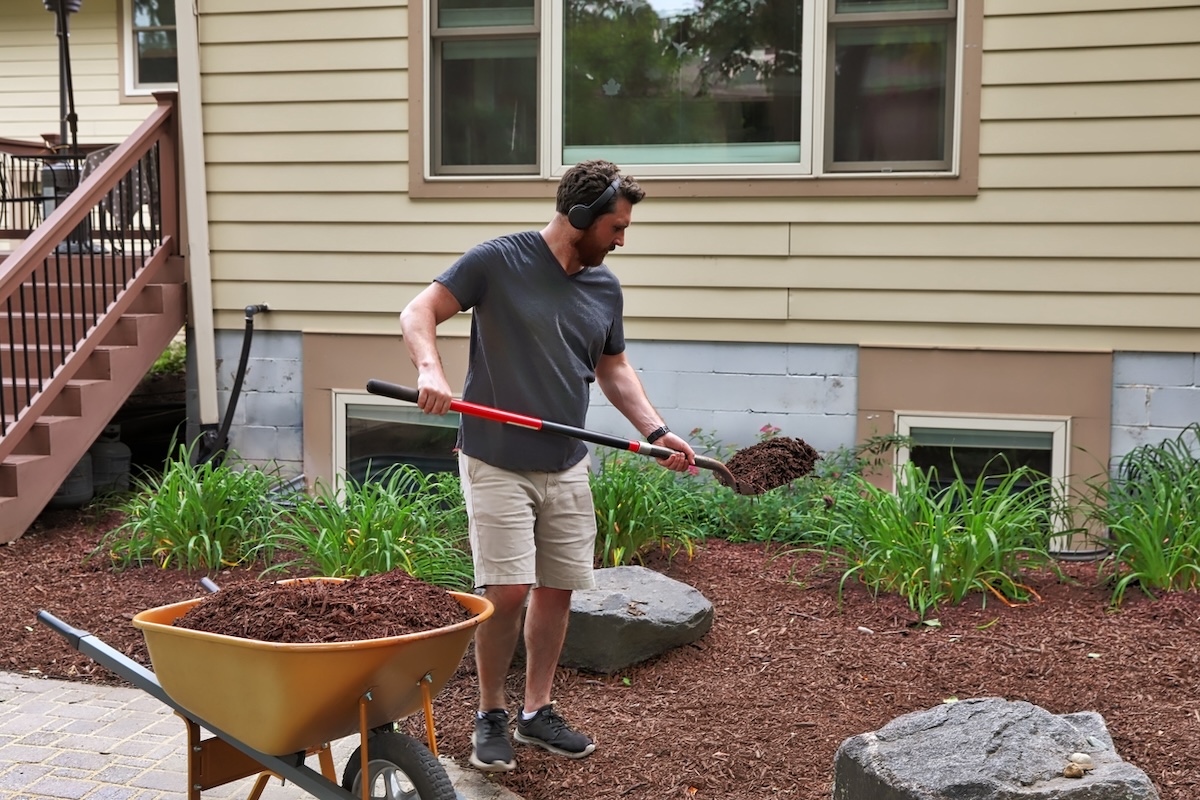

We may earn revenue from the products available on this page and participate in affiliate programs. Learn More ›
Mulch serves multiple purposes in the garden and landscape. It helps prevent weeds, retains moisture in the soil, controls temperature, prevents erosion, improves drainage, and adds a polished look for curb appeal. It also provides a protective barrier from mowers and trimmers.
There are two basic types of mulch: organic and inorganic. While both provide some of the same benefits, each has distinct advantages. Within those two categories are numerous varieties made from different materials, perhaps the most popular of which are wood and rubber. The specific application will help determine which is best: rubber mulch vs. wood mulch.
Rubber mulch is made of inorganic material, whereas wood mulch is made of organic material.

Inorganic mulch is derived from human-made materials or natural materials that do not decompose, such as rocks, stones, and gravel. These natural materials are well-suited to areas in need of good drainage and for plants requiring heat.
Rubber mulch is an inorganic synthetic mulch commonly made from old tires. This recycled rubber mulch doesn’t attract bugs, won’t blow away easily, and doesn’t absorb water, but, says Bryan Clayton, CEO of GreenPal, “Some folks don’t like the smell of rubber in their garden, especially on hot days when it can heat up.” And because it absorbs heat, he says, it can potentially scorch plants. Rubber landscape mulch doesn’t retain moisture, which is critical for plant health. However, he notes, “there are places where rubber mulch makes sense, like playgrounds or specific landscaping areas where you’re not looking to support plant life.”
Organic mulch is made of natural materials that decompose over time, such as wood chips, bark, leaves, straw, pine needles, grass clippings, and compost. As it decomposes, it adds nutrients, improves the soil’s structure, and increases soil’s organic content. Because it decomposes, it must be replaced periodically.
As Clayton says, “It’s organic, it’s environmentally friendly, and it serves a purpose beyond just looking nice. It helps retain moisture, keeps your plant roots insulated, and as it breaks down, it feeds your soil, making it richer for future planting.”
Wood mulch is considered more environmentally friendly than rubber mulch.

Wood mulch is generally considered more environmentally friendly than rubber mulch for landscaping because it’s a natural product that biodegrades easily, adding nutrients to the soil. “When it comes to nurturing your plants,” Clayton says, “nothing beats good, old organic mulch because plants thrive on the organic matter that breaks down and feeds them over time.”
Of course, artificial mulch made of rubber does not break down into organic material, and thus, has no beneficial impact on the soil. In fact, not only can it contaminate plants growing in it as it releases volatile organic compounds (VOCs), but it poses health risks to those who eat the produce from those plants.
Among the rubber mulch pros and cons are concerns that the heavy metals and chemicals used to make tires can leach into the soil, despite cleaning and processing. A study published in the National Library of Medicine linked heavy metals such as aluminum, zinc, cadmium, and chromium, which leach into the soil as the rubber breaks down, to health conditions in people and animals. And because the heavy metals eventually leach into the groundwater, the risk of contamination spreads.
While wood mulch diverts a tree byproduct out of the landfill, some wood mulches are less environmentally friendly than others. Mulches made with recycled lumber, for example, might contain toxic preservatives such as chromated copper arsenate that can leach into the soil and groundwater. Others are produced using poor forest management practices.
To ensure that wood mulch is free of chemicals and sustainably sourced, look for products certified by regulatory associations such as the Mulch & Soil Council.
Rubber mulch requires less maintenance than wood mulch.

As an alternative mulch, rubber typically requires less maintenance than wood mulch. It stays in place well, relatively unaffected by wind or heavy rain. It has a lifespan of up to 10 years, so it doesn’t need replacing as frequently as wood mulch. Some wood mulches can last 4 to 7 years before decomposing, depending on climate, soil conditions, and other factors, but most homeowners refresh it annually to keep it looking nice.
“Sure, rubber mulch might last longer and require less maintenance in terms of topping up,” Clayton says, “but consider this: it’s a pain to clean debris from it, and over time, you might find yourself needing to refresh it anyway because it can get mixed with soil and look untidy.”
Regular sweeping and raking can aid in debris removal and “fluff up” both kinds of mulch, just as layering landscape cloth underneath both types of mulch can prevent weeds from growing up through either variety.
Periodic power washing can revive the look of rubber as a mulch substitute and extend its lifespan. Adding a mild detergent solution will not only make rubber mulch look newer, but will also kill germs and bacteria—an important consideration if children play on it.
Wood mulch costs less and is easier to install than rubber mulch.

Wood mulch ranges in price from $30 to $45 per cubic yard, depending on type and color—with cypress mulch selling for as much as $110 per cubic yard. Delivery can run $160 per truckload, and installation can average about 20 cents per square foot, although many homeowners spread wood mulch themselves, using only a wheelbarrow and rake. Furthermore, Clayton adds, “It’s cost-effective in the long run because it’s doing double duty: beautifying your space and contributing to the health of your garden.”
Conversely, rubber mulch costs approximately $120 per cubic yard. While some gardeners consider it more cost-effective because it lasts longer, Clayton says, “Rubber mulch has its place, but it’s not the silver bullet for mulch replacement that everybody had hoped when it first came out about 15 years ago.”
Installation of rubber mulch is similar to that of wood mulch, but landscape fabric should be laid on the area after it’s been cleared of debris, graded, and prepared. Once the fabric has been secured, mulch can be shoveled on to a depth of 2 inches.
Keep in mind that rubber mulch is flammable. It burns hotter and faster than wood mulch and is harder to extinguish. Therefore, in regions where brush fires are a threat, it’s wise not to put rubber mulch against a house or other structure.
